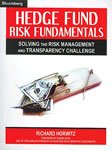Question
A bank's balance sheet a. shows that total assets equal total liabilities plus equity capital. b. lists sources and uses of bank funds. c. indicates
A bank's balance sheet
a. shows that total assets equal total liabilities plus equity capital.
b. lists sources and uses of bank funds.
c. indicates whether or not the bank is profitable.
d. does all of the above.
e. does only A and B of the above
A clause in a mortgage loan contract requiring the borrower to purchase homeowner's insurance is an example of
a. a restrictive covenant.
b. a collusive agreement between mortgage lenders and insurance companies.
c. both A and B of the above.
d. neither A nor B of the above
A commercial bank's largest source of funds is its
a. nontransaction deposits.
b. checking deposits.
c. borrowing from the Fed.
d. federal funds.
When a $10 check written on the First National Bank is deposited in an account at the Second National Bank, then
a. the liabilities of the First National Bank decrease by $10.
b. the liabilities of the Second National Bank increase by $10.
c. the reserves of the First National Bank increase by $10.
d. all of the above occur.
e. only A and B of the above occur.
Which of the following is NOT one of the key facts about financial structure?
a. Debt contracts are typically extremely complicated legal documents that place substantial restrictions on the behavior of the borrower.
b. Indirect finance, which involves the activities of financial intermediaries, is many times more important than direct finance in which businesses raise funds directly from lenders in financial markets.
c. Collateral is a prevalent feature of debt contracts for both households and businesses.
d. New security issues (i.e. firm issue stocks or bonds) is the most important source of external funds to finance businesses.
Which of the following statements about financial markets and securities are true?
a. A bond is a long-term security that promises to make periodic payments called dividends to the firm's residual claimants.
b. A debt instrument is intermediate term if its maturity is less than one year.
c. A debt instrument is long term if its maturity is ten years or longer.
d. The maturity of a debt instrument is the time (term) that has elapsed since it was issued.
Step by Step Solution
There are 3 Steps involved in it
Step: 1

Get Instant Access to Expert-Tailored Solutions
See step-by-step solutions with expert insights and AI powered tools for academic success
Step: 2

Step: 3

Ace Your Homework with AI
Get the answers you need in no time with our AI-driven, step-by-step assistance
Get Started


